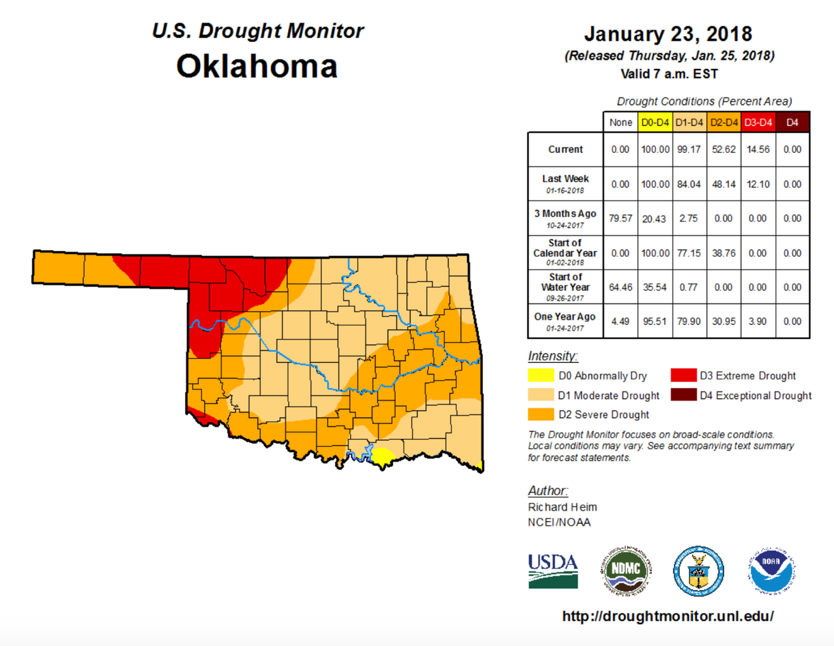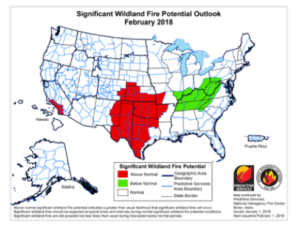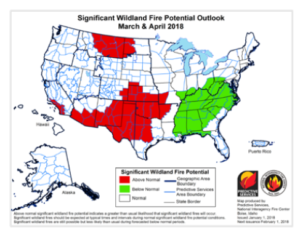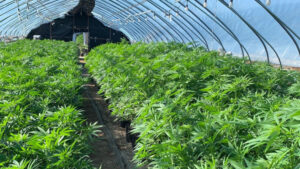Throughout the month of January, moderate to severe drought conditions covered most of Oklahoma, and meteorologists do not expect the trend to change anytime soon.
According to the National Integrated Drought Information System, the current drought is affecting about 8,368,000 Oklahomans, which is nearly 100% of the state’s population. As of Jan. 31, the drought meter rated Oklahoma City, OK as D1: Moderate Drought.
Oklahoma Christian University’s hired landscaping service, Horticare, maintains the school’s grounds. Their responsibilities include planting flower beds, mowing grass and trimming weeds across campus.
Jerrod Dean, Horticare president, said a lot of people do not notice droughts during this time of year, as most plants are dormant during the cold, winter months. He said plants and trees lack leaves and appear to stop growing now, but the full extent of the drought’s impact may become evident as spring approaches.
“Obviously when spring comes out, if we don’t get a whole lot of rain and people haven’t watered and we have these hard freezes, there’ll be a lot of plants that basically did not make it through the winter,” Dean said. “Either parts of them have died off or the whole plant if they’re small. That can always happen to plant material.”
Although natural rain is the best option for sustaining plant life, Dean said his company has alternative water supply options to compensate for the lack of precipitation. Because the evaporation rate is high, he said Horticare fills Oklahoma Christian’s pond and fountains with water from the well system on campus.
“Supplemental watering throughout these drought times is key,” Dean said. “Hopefully, in the spring we’ll be getting some [rain], because it will postpone a lot of the budding as well on the plant material.”
One potential threat of a prolonged drought is increased fire danger. Maps from the National Interagency Fire Center show an above-normal wildland fire potential outlook for Oklahoma from February through April.
“For Texas, Oklahoma and Arkansas, the drought is expected to deepen,” The Fire Center’s report said. “Fuels will be very receptive. Fire risks should trend to above average levels from February onward. Above average grass loadings will magnify risks for large and higher rates of spread fire potential.”
Dean said the Oklahoma Christian campus and community is in a bad position, as the need for rain is high. He said the university’s irrigation system is always operational, but is not used consistently during the winter. If the fire threat goes up or causes concern on campus, he said Horticare will begin to water the grounds more often and employ other preventative tactics.
“A lot of times, we make sure all of the dormant grasses are cut down low, so if it does catch fire, it’s not going to be real high up in the air,” Dean said. “It’s going to be really low to the ground that can be put out fairly quick. It won’t jump onto buildings or anything like that, is kind of the goal with that.”
According to the Oklahoma Christian Policy for Fire Safety, all residence directors are trained to use fire equipment and must complete “on-the-spot training” to show they are able to react properly in the event of a fire.
“At staff orientation/training, residence directors not only test their fire equipment, but familiarize the staff with the building and the equipment so they know how to operate it,” the policy said. “The staff also goes through fire safety with the students at orientation.”
In addition to year-round fire awareness and prevention at Oklahoma Christian, Oklahoma State Gov. Mary Fallin issued a burn ban for 40 counties Jan 30. The ban includes Oklahoma county—where Oklahoma Christian is located—and is in effect until Feb. 16.

















Be First to Comment